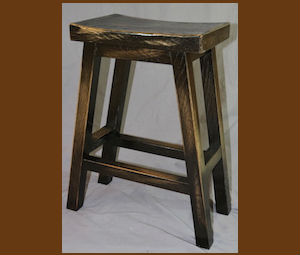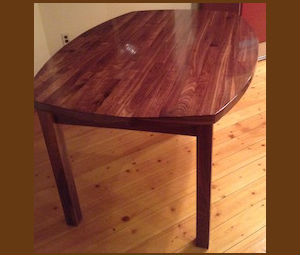16 March 2018 Hits: 6508
 “Loose Tenon Joinery"
“Loose Tenon Joinery"
Vs Traditional Mortise & Tenon.
Loose Tenons, a joint that uses a separate piece of wood as the tenon inserted into mortises cut into both pieces of wood to be joined, have gotten a lot of attention over the past several years particularly after Festool came out with the Domino in 2006, a tool that creates both mortises to receive a factory-made tenon known as a Domino. There are certainly a lot of opinions on the topic in the woodworking community. I guess it must be time for mine.
Many purists insist on sticking with the traditional mortise and tenon. It has been one of the most popular joints in furniture building since—well, pretty much since the beginning of furniture building. I’m clearly not a purist because I love loose tenon joinery. I first fell in love with it after I saved up enough money to buy a Festool Domino (yes, I saved for a long time). I couldn’t justify buying both the regular one and the XL, so I bought only the small one (it was cheaper). With my largest tenon/Domino only being, 10x50x24mm (~3/8”x2”x1”), I often found myself in situations where the little Dominos weren’t going to provide the strength, necessary and safe for the piece of furniture I was building. But I wanted the ease and speed of the loose tenon joinery.
04 January 2018 Hits: 6311
 “Garage Woodworks' Horizontal Mortiser"
“Garage Woodworks' Horizontal Mortiser"
Poplar & Birch Plywood Jig.
I've been watching Brian Grella from Garage Woodworks for several years on Youtube, and I fell in love with his loose tenon joinery. It is a quick and easy way to construct fine furniture, and it provides a super strong joint that looks amazing. I'd been watching him use his mortiser, and I've wanting to build it for a long time. Finally, this fall, I ordered the plans and started the build. It is not easy, and I had to send Brian several questions--which he answered immediately, but after several challenging weekends in the shop, I finally finished the project. I'm anxious to give it a try it out and build my first loose tenon furniture. If you are interested in building this mortising machine check out Brian Grella's page http://www.garagewoodworks.com/GW_Store.php
28 October 2017 Hits: 5650
 “Oak Bar Stool"
“Oak Bar Stool"
Dyed oak bar stools.
This solid oak bar stool was inspired by a DIY Tyler build. I used Tyler's dimensions and basic design with a few modifications. I used Festool dominos for the joinery. I cut the top of the stool with a bandsaw to create the curve in the seat. After sanding everything, I used a damp rag to wipe down all the pieces. After they dried, I sanded down the raised grain to 220 grit before I wiped on the water-based black dye. I used several coats to get it as dark as possible. Once the dye was dry I sanded off several spots to create a distressed look. Then I put on five coats of satin wipe-on polyurethane.
21 September 2017 Hits: 6101
 “Diresta Inspired Walnut Table"
“Diresta Inspired Walnut Table"
Eight place table for the cabin.
I built this walnut table for the cabin after I saw Jimmy Diresta build a conference table with strips of wood glued to a sub-straight. Watch his video on Youtube to see how Jimmy made his large meeting table https://www.youtube.com/watch?v=ue6zQsR9GkA. I used two sheets of birch plywood as the sub-straight and solid walnut for the 2" think legs and apron. Then I cut lots of 3/16" strips to cover the top and sides. I used a curve shape so I cut the side pieces about 1/8" thick so I could bend them around the curves. When all the strips were in place I used a trim router to cut even with the sub-straight. I used epoxy with sawdust to fill in any holes or gaps and finished it off with eight coats of wiping varnish. It turned out great.